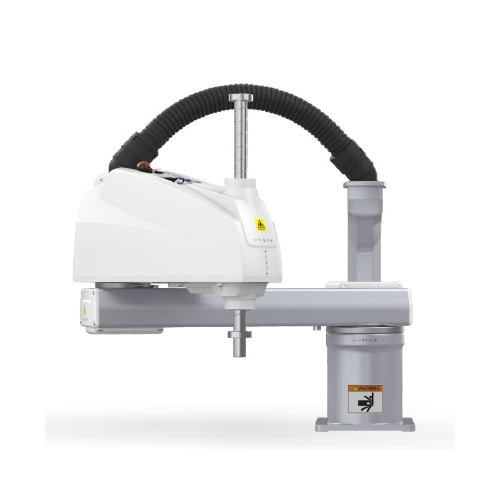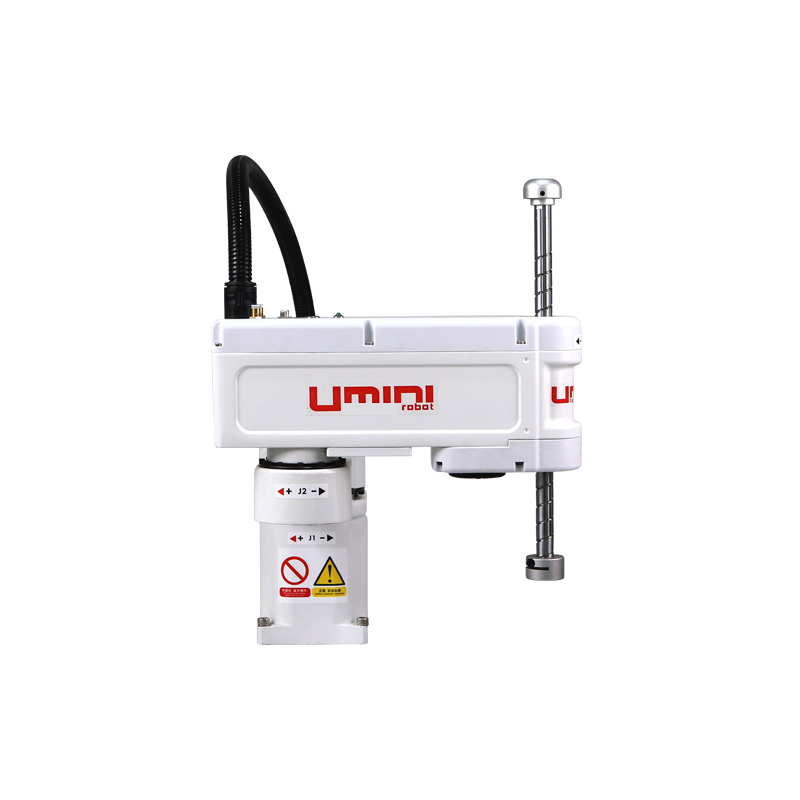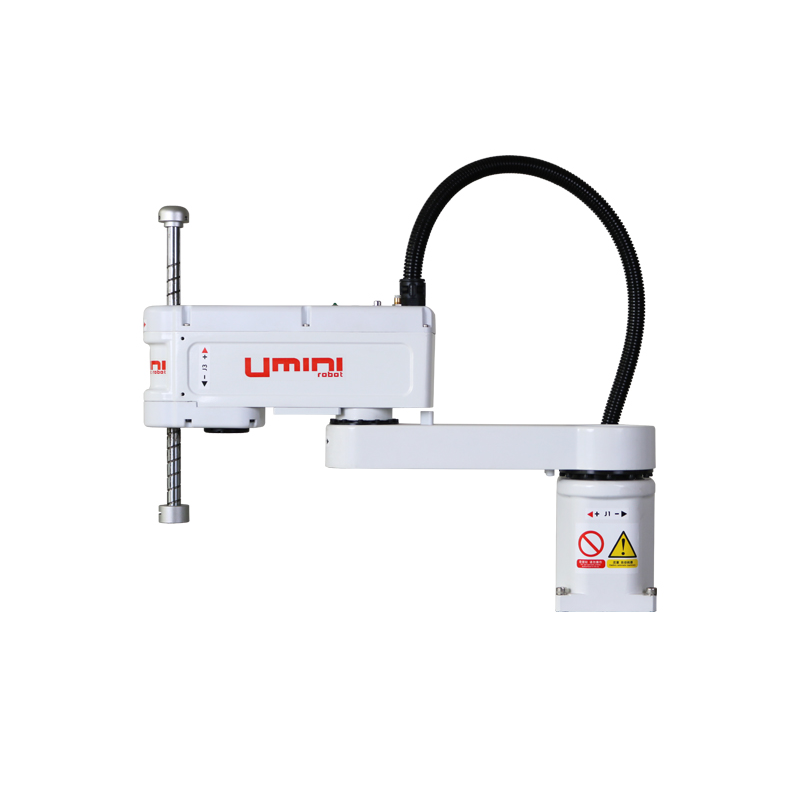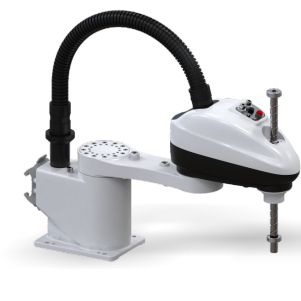SCARA robots excel at assembling and disassembling items of small size that weigh less than 20 kilograms; these flexible 6 axis industrial robots can handle anything from half a kilogram up to 20 kg in weight. Unfortunately, SCARAs lack as much flexibility or adaptability compared to their rivals in this regard.
Due to their selective compliance design, EVS SCARA robots are less rigid than Cartesian or gantry robots – making them an excellent option for assembly and pick-and-place tasks.
Integration with AI and IoT

As manufacturing innovation remains at the core of industrial automation, SCARA robots remain integral parts of production systems. Offering the right combination of speed, precision and efficiency for various applications. This blog post examines their individual technological nuances; how they’re being employed within manufacturing; as well as advances in artificial intelligence (AI) and Internet of Things (IoT) technology which can extend their capabilities.
SCARA robots are often preferred for tasks that require high levels of precision but are unsuited for other types of robotics, like welding and painting. Although SCARAs feature precise mechanics, their compact size makes them well suited to space-constrained environments and their rapid speed allows for faster cycle times and increased productivity.
SCARA robots offer several key advantages over other types of robots, including being easy to program and integrate into existing assembly lines. Furthermore, some models can even be mounted upside-down on the ceiling in order to save floor space. Unfortunately however, SCARAs don’t provide as much flexibility and may have limited mechanical dexterity which limits market growth.
One approach to address this challenge is combining SCARA robots with advanced vision systems that enable them to grab randomly oriented parts more accurately, thus decreasing cycle times and increasing flexibility, helping manufacturers adjust more readily to changing production needs.
IoT sensors can also be used to monitor robot performance and alert the system of any potential issues. Furthermore, AI-powered analytics platforms can then use production data analysis and recommend process improvements that increase efficiency while improving quality control.
AI and IoT technologies are revolutionizing the future of SCARA robots, making them more intelligent and autonomous as they learn from previous experiences and automatically adjust to changing conditions. Furthermore, these innovations will enhance their collaboration with humans as well as add great value for manufacturing processes; hence their popularity may only grow over time – particularly across Asia-Pacific due to ongoing investments in robots and manufacturing processes as well as rapid industrialization across this region.
Intelligent monitoring

SCARA robots boast a small footprint that makes them suitable for small work spaces and industries across a wide spectrum. Offering fast speeds and precision performance, these versatile units are well suited to material handling, assembly and dispensing – helping companies in electronics, automotive and food & beverage to increase productivity while decreasing operating costs.
SCARA robots have become an indispensable element of smart manufacturing thanks to AI and IoT integration into production lines. By providing data-driven decision making capabilities and optimizing performance while reducing downtime, smart manufacturing helps manufacturers manage challenges like workforce shortages and product transitions more smoothly than ever.
As well as improving operational efficiency, smart technology also increases robot safety. For instance, smart sensors can monitor the status of actuators and components on robots in real-time to identify any issues and make adjustments accordingly, ultimately increasing reliability while decreasing downtime and maintenance costs.
Intelligent monitoring not only enhances existing production lines but can also be used to optimize new products and processes. Machine learning algorithms are particularly beneficial when performing visual inspections to detect subtle defects that would otherwise escape human eyesight; this capability makes the technology invaluable in industries with stringent quality requirements such as electronics or medical device manufacturing.
Future integration of AI and IoT technology into SCARA robots may further advance their functionality in areas like monitoring. By analyzing robot condition data, manufacturers can plan maintenance and repairs ahead of time and reduce unexpected downtime, improving overall production efficiency. Predictive maintenance strategies could even be applied to oil-lubricated gearboxes by monitoring temperature and pressure readings as well as wear particles and contaminants detection, in order to predict when they might require servicing.
Though advancements in SCARA robot technology are helping increase their versatility, several factors still limit their market growth. One is their high upfront investment cost which may put them out of reach for smaller enterprises despite their potential to boost productivity and lower operating costs; another factor is their relative lack of flexibility when compared to other types of industrial robots such as 6-axis cobots which work alongside humans.
Predictive maintenance

Manufacturers are increasingly turning to automation in order to increase efficiency and production output, including robots. Automation technology is used across industries including electronics, pharmaceuticals/medical, automotive/packaging as well as packaging. While introducing robots can bring many advantages, some challenges must first be met such as regulatory issues as well as the training needed for employees interacting with robots.
Despite its challenges, the robot industry continues to experience steady growth. A recent study revealed that 88% of manufacturing companies use robots at their facilities and most plan on expanding the use of these robots in future.
One factor behind the growth is the rise in SCARA robot availability. Relatively cheap and straightforward to program and incorporate into existing systems, these inexpensive robots make an appealing option for manufacturers seeking to increase their profit margins while having a smaller footprint than other types.
SCARA robots are commonly utilized for assembly and pick-and-place applications, yet can also be tailored for other tasks, like soldering. Their unique combination of fast horizontal movements with precise vertical positioning makes them an excellent choice.
SCARA robots offer many advantages over conventional robotic systems, including their ease of connection to peripheral devices like vision systems. As such, these versatile units make an excellent solution for many warehousing and logistics applications.
As the robot industry expands, more advanced technologies are being integrated with SCARA robots. AI is expanding SCARA robots’ sensory capabilities by combining motion control and machine learning – this allows AI-enabled SCARAs to adapt quickly to dynamic environments while making decisions instantly, thus decreasing part presentation costs while increasing operational flexibility.
Future applications

SCARA robots are popular choices for many applications due to their versatility. These machines can handle loads, speeds, distances and perform different tasks such as welding and painting with ease. Industrial robots typically feature smaller frames than other industrial robots, making it easier for them to fit into tight spaces more seamlessly. SCARA robots offer exceptional versatility in terms of programming flexibility; you can utilize proprietary software from their manufacturer, industry-standard robot programming languages like RAPID and KRL or high-level programming languages with robotics libraries to program them. Their programming versatility makes SCARAs ideal for companies seeking to automate existing production processes or experiment with automation for the first time.
As we transition to smarter and more sustainable manufacturing practices, SCARA robots will play an increasingly significant role. By integrating AI and IoT technologies, they will be able to optimize performance while anticipating maintenance needs, which in turn will increase productivity while simultaneously decreasing downtime and operational costs.
Recent advances have brought forth collaborative SCARA robots that work alongside humans in shared workspaces without needing for safety fencing, heralded as part of the future of industry and predicted to improve workplace quality and efficiency by merging human creativity and craftsmanship with robotic precision. These cobots are expected to transform workplace quality and efficiency through merging human creativity and craftsmanship with robotic power and precision.
Technological advancements are making energy efficient robots possible, leading to lower operating costs of SCARA robots and helping businesses meet sustainability goals. Thanks to advancements in motor design and control systems, energy demands for these industrial robots are steadily reducing while performance remains unaltered – helping save businesses money on electricity bills while simultaneously improving the environment and meeting sustainability targets.
Due to these technological advancements, new generations of intelligent SCARA robots will soon be developed that will perform various tasks more accurately and quickly than ever before. Customers will be able to identify and interpret complex data sets to better respond to shifting environments, increasing reliability and accuracy and thus leading to increased productivity, improved product quality, and reduced downtime. Finding the appropriate industrial robot requires careful consideration of your application requirements, operating environment, cost-effectiveness, ease of integration and programming as well as cost.
